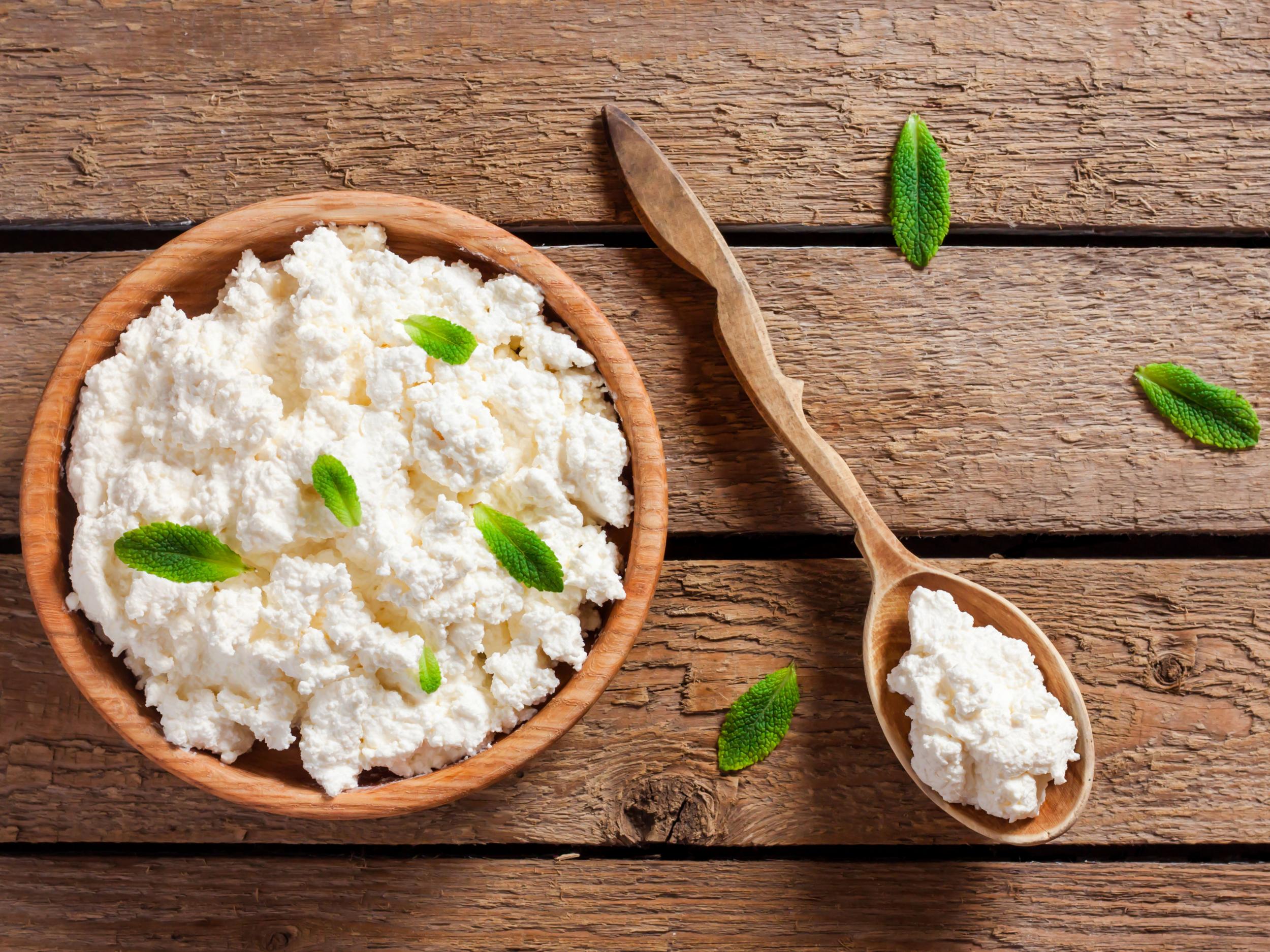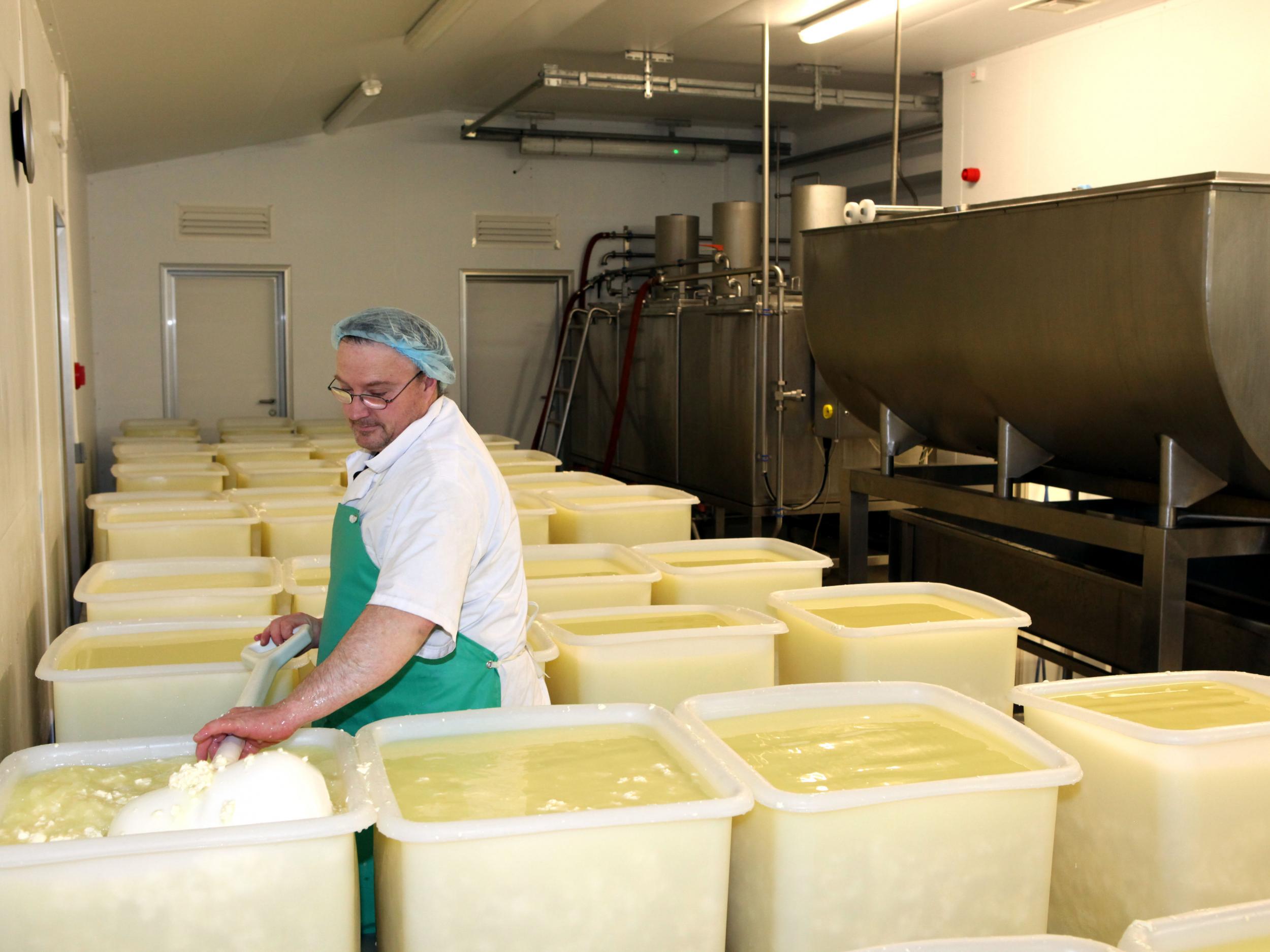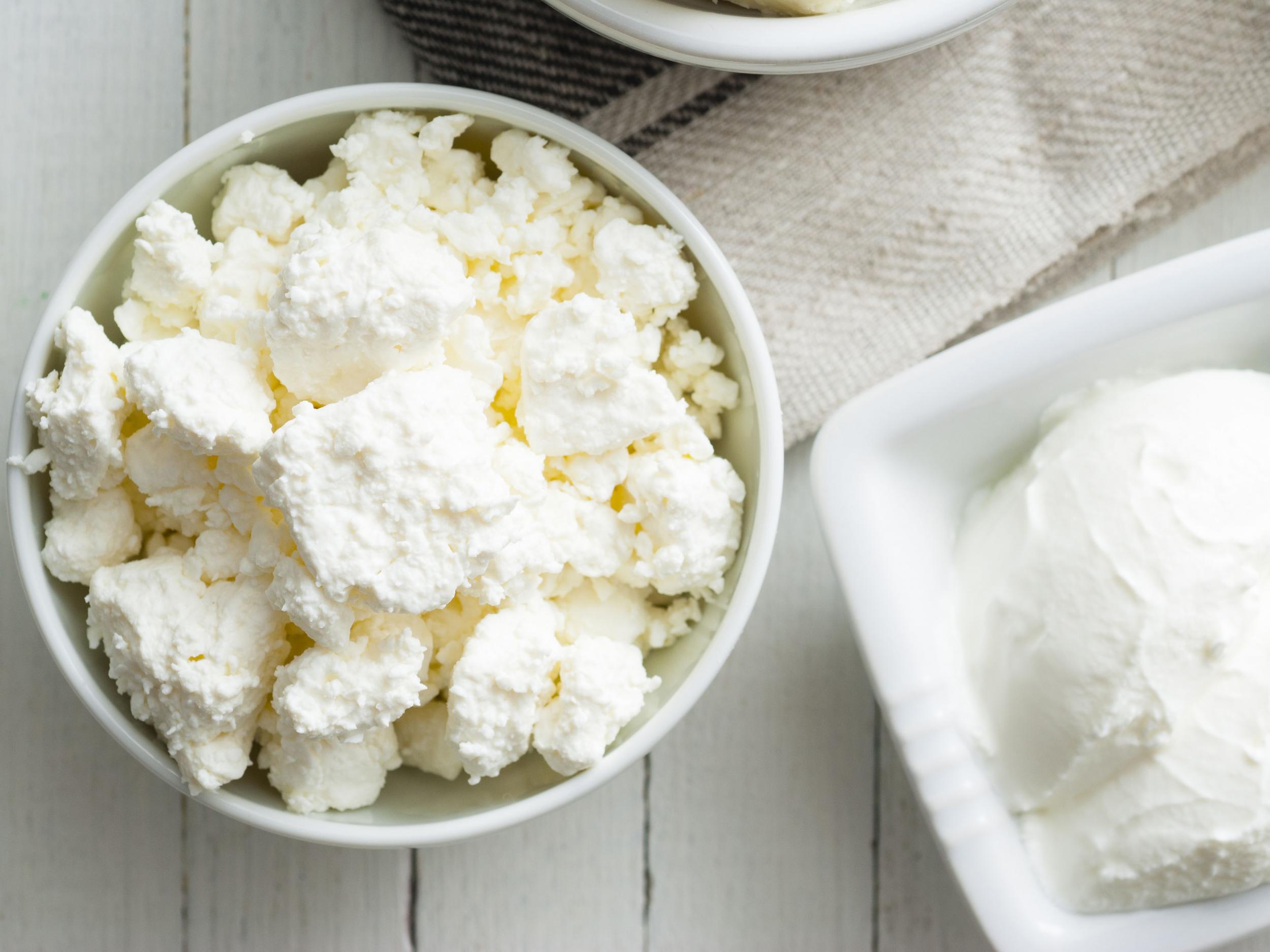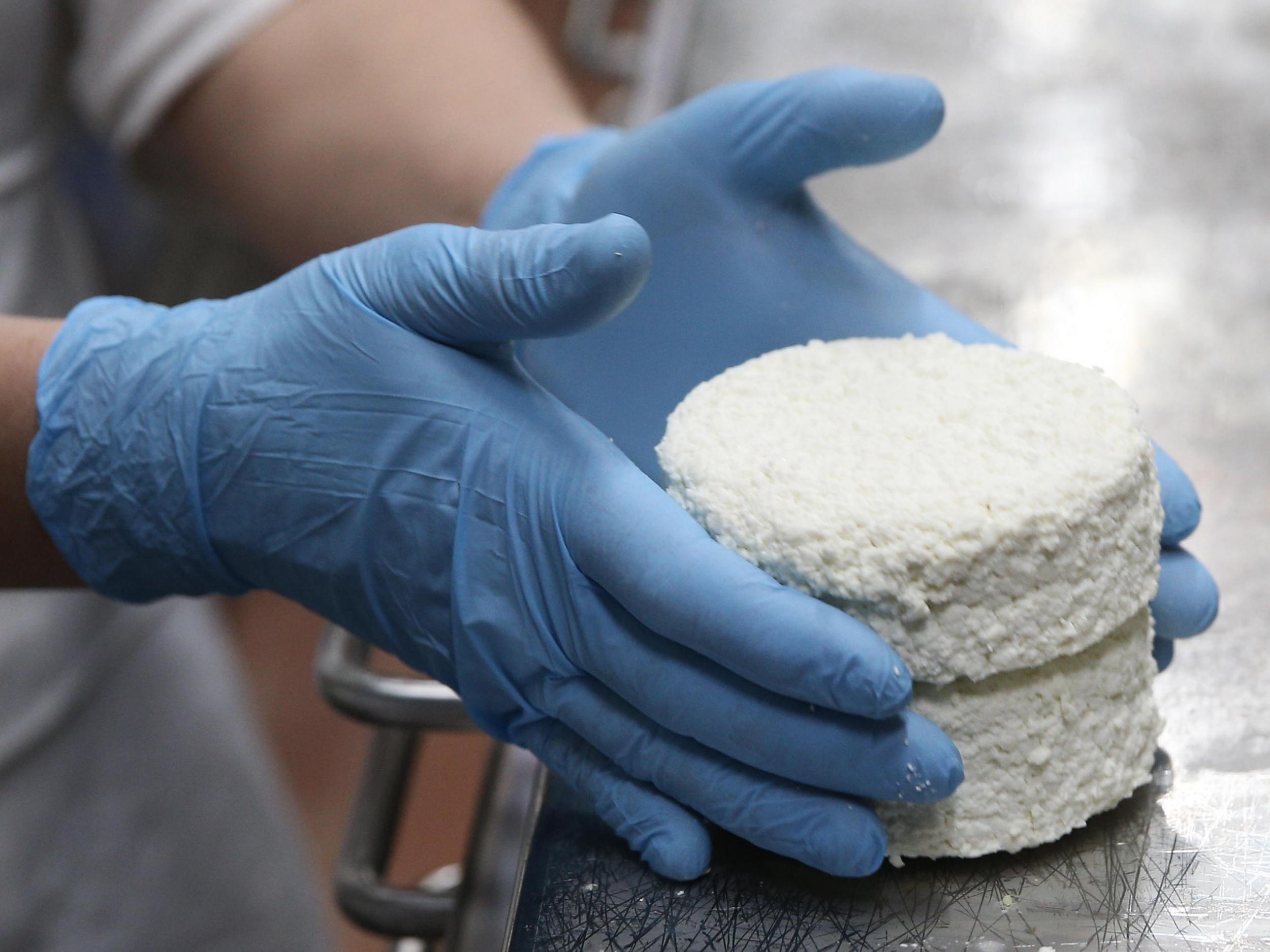The cottage cheese appeal: Is America ready to love the creamy classic again?
After languishing in yoghurt’s shadow for decades, cottage cheese is back, sporting new flavours and small-batch appeal

Cottage cheese began life in America as an easy, economical way for colonial cooks to make use of milk left over after they skimmed off the cream. By the 1970s, its amicable presence in recipes and on diet plates had made it a star.
Fame is fickle, and so are the nation’s eaters. Cottage cheese fell out of favour, and now spends its days hanging out in stodgy pint containers near the sour cream, while yoghurt sprawls out across acres of the dairy case, dressed up in cute little tubes, flip tops and French glass jars.
America loves a comeback though, and there are plenty of people who are betting that cottage cheese is primed for one.
“Every seven years or so another wave comes through where we try to reposition cottage cheese,” says Dave Potter, president of Dairy Connection in Madison, Wisconsin, which sells custom cultures and enzymes to cheesemakers. “That’s about where we are now.”
This time, with help from both big food companies and small-batch cheesemakers, it might actually work.
On the mass-market side of the equation, the nation’s largest dairy producers are targeting younger people looking for a protein-rich, natural snack they can eat instead of a meal. (Cottage cheese can have twice the protein of some yoghurts, though it has a lot more sodium.)
A couple new players have jumped in, including Muuna, the first product from Israel’s largest food manufacturer to be sold in the United States.

American companies like Dean Foods, the nation’s largest dairy company, have given their cottage cheeses makeovers, packing them into smaller, sexier packages and asking retailers to move them away from the sour cream and closer to the yoghurt.
New lines have interesting mixes of fruit and nuts, and some producers are experimenting with millennial-friendly additions like probiotics and chia seeds. Flavours are expanding beyond dusty stalwarts like pineapple to include Kalamata olive, habanero chile or cumin.
The goal, according to industry analysts, is to “uncottage” cottage cheese – or, as one dairy executive put it, “Chobani it”.
But the road back is not going to be easy. Yoghurt outsells cottage cheese by roughly 8 to 1, says John Owen, a senior food and drink analyst who prepared the annual cheese report for Mintel, a market research company.
Even though yoghurt sales have started to flatten, American shoppers still bought $8.5bn (£7.6bn) worth in 2017.
“Yoghurt got adopted by big food in the way cottage cheese never did,” he says.
To use the terminology of food marketers, yoghurt wears a “health halo”. Cottage cheese, long linked to the drudgery of dieting, instead is fighting a punishment halo.
“Yoghurt always had a better back story than cottage cheese,” says Jonathan Kauffman, author of Hippie Food: How Back-to-the-Landers, Longhairs, and Revolutionaries Changed the Way We Eat.
Kauffman, like many people, has let cottage cheese fall out of rotation: “It’s one of those foods I don’t eat, but I feel like I should.”
It wasn’t always this way. Cottage cheese was once a reliable character actor, standing in for meat during two world wars, filling in for ricotta and starring on diet plates. It gave heft to salad bars and made a regular appearance (with fruit) on Richard Nixon’s lunch tray.
By the mid-1970s, the golden era of cottage cheese, producers in every state were pumping out more than £1bn a year. Yoghurt was considered a weird, sour interloper reserved for European expatriates and health nuts.
But then came the 1980s. Fruity, sweetened and sometimes frozen yoghurt had caught on and cottage cheese was going nowhere but down. The rise of Greek yoghurt in the early 2000s knocked it to the mat.
Potter thinks salvation won’t come at the hands of Big Cottage Cheese. Mass production, he says, is part of what killed it in the first place.
By the 1980s, large corporations had absorbed most regional dairies, and much of the nation’s cottage cheese had become a flat-tasting, low-fat commodity with rubbery curds stabilised with starches and gums.
“Really good cottage cheese is a hard product to make that doesn’t take well to automation,” Potter says.
Unlike yoghurt, which is a matter of adding a culture to milk and waiting for it to thicken up, cottage cheese is one of those foods that is deceptively simple to produce but difficult to do well. It’s like making really good scrambled eggs, but takes hours. You have to take it low and slow.
“Good cottage cheese takes a little craftsmanship,” says Potter, of the Dairy Connection.
That’s where cheesemakers like Sue Conley and Peggy Smith, founders of Cowgirl Creamery in Marin County, California, come in.
In the 1990s, Conley learned to make cottage cheese from Potter. It was one of the first cheeses she and Smith produced when they opened their original creamery in Point Reyes Station, California, in 1997.
The key is very fresh skim milk from a well-run local dairy, Conley says (they get theirs from nearby Bivalve Dairy, which is certified organic and grazes its 200 Holsteins on pasture). Next comes a simple starter culture that feeds on milk sugars to create lactic acid.

Overnight, luscious, tender curds slowly form. In the morning, cheesemakers cut them into pieces no bigger than peas. They cook and stir the curds for about one and a half hours to release some of their acidity. Then, the cheesemakers drain the whey and wash the curds three times.
The last step is the dressing, which is the term for milk or cream that is added to the curds to make them creamy. The dressing determines the fat content of the cottage cheese, and is where most of the flavour lies.
Cowgirl Creamery uses creme fraîche, and calls its pleasantly tart product “clabbered cottage cheese”. The cheese will be sold in Northern California and online, with plans to expand distribution on the west coast in the fall.
It’s not inexpensive. A 5.3 ounce container will cost a little less than $3.
Conley suggests eating it the way cheesemakers do after they finish a batch: rip open a bag of barbecue-flavoured potato chips and use it like a dip.
Cowgirl Creamery interrupted production in 2012 because the process requires a lot of water and California was in a terrible drought.
But this month, the creamery has started making the cottage cheese again at its Petaluma, California, facility to the joy of people like Janet Fletcher, a cheese writer who published a love letter to it in The San Francisco Chronicle.
“I abandoned cottage cheese when I left home,” she wrote. “Tasting Cowgirl Creamery’s superb product made me want to welcome cottage cheese back into my life.”
When cottage cheese is good, it’s delicious, something the cheesemonger Kate Arding found when she tasted Cowgirl Creamery’s version before production stopped. Arding, who grew up eating (and not really liking) cottage cheese in Britain, began a quest to persuade sceptical customers.
“They’d taste it and get this glassy-eyed look,” she says. “You could see their faces just change.”
The cheese has been entered in the American Cheese Society’s annual competition, held each summer, where cottage cheeses are just beginning to get noticed.
Last year, Traderspoint Creamery in Indiana and Cabot Creamery in Vermont entered. Cabot took second place in one of the society’s fresh, unripened cheese categories.

Cottage cheese is also nudging its way into the winners’ circle at the World Cheese Awards, the largest cheese event in the world. At the 2017 competition in London in November, cottage cheeses from Spain and Luxembourg took silver awards, and two others from Spain and Austria won bronze awards.
To be sure, cottage cheese and its pressed cousins like paneer and queso fresco remain more popular in other countries. And in March, Tablet Magazine included cottage cheese on its list of the 100 most Jewish foods.
Rekindling the love affair may be wishful thinking. There are a lot people who just are never going to like cottage cheese.
One is Kevin Pang, a food writer in Chicago who recently wrote of his revulsion for The Takeout, a food website affiliated with The Onion.
“There’s something about its connotation with cellulite,” he says in an interview. And then there’s the texture.
“Us Chinese, we love the slippery and the slimy, like tendon and jelly fish,” he says. “But cottage cheese, man. I just can’t do it. And I’ve eaten horse.”
Even Ed Townley, chief executive officer of Cabot, isn’t convinced that cottage cheese is poised for a comeback, even though his company makes about £5m a year.
Like Pang, he singles out texture. Perhaps cottage cheese could be whipped to smooth it out, or made more spreadable, like ricotta cheese, he says.
And then there is the name.
“It conjures up this old-fashioned image where you think of a cottage,” he says. “Bottom line, it’s not sexy. A very clever Turkish name or something would go a long way.”
© New York Times
Join our commenting forum
Join thought-provoking conversations, follow other Independent readers and see their replies
Comments